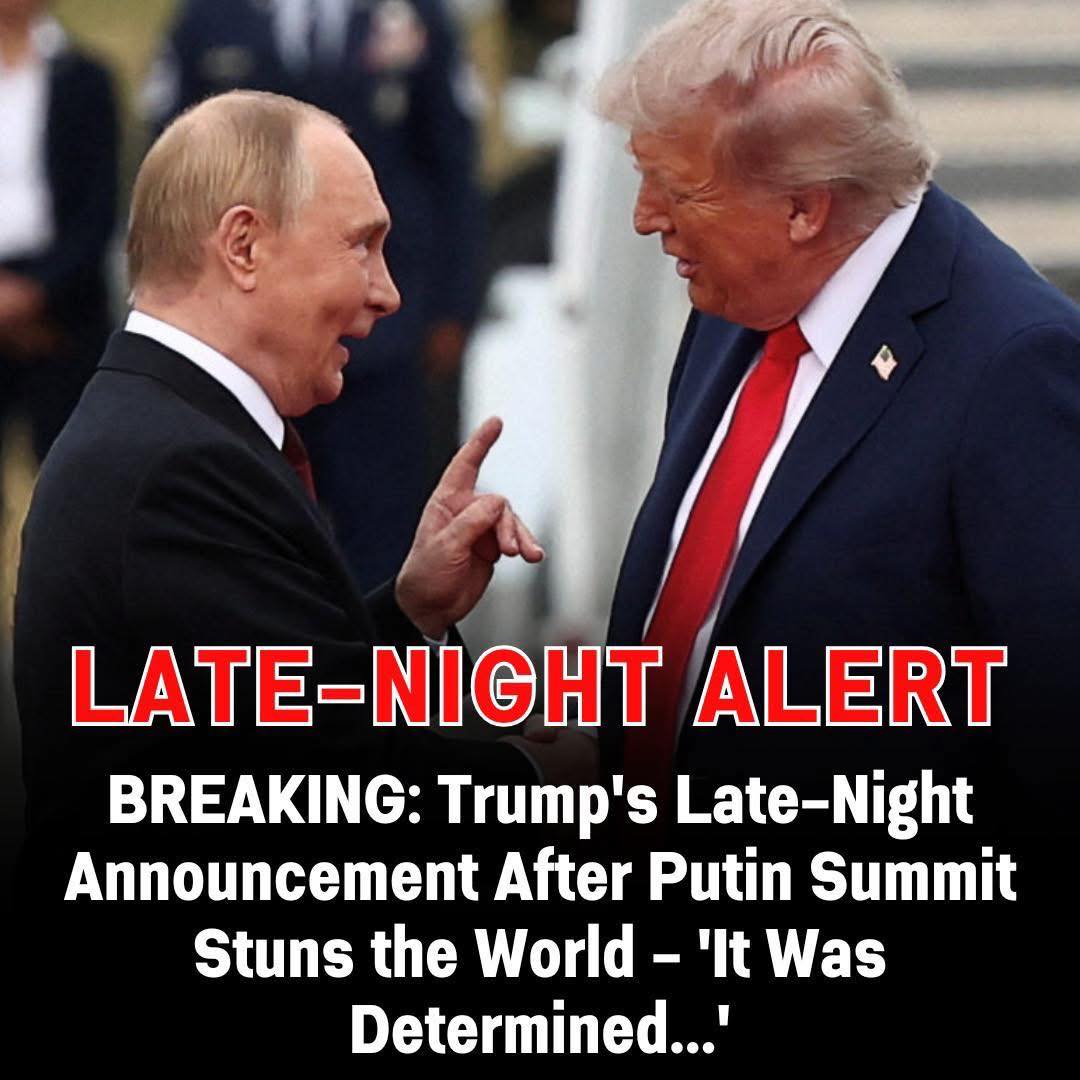Anchorage, Alaska — In what could prove to be one of the most consequential diplomatic turning points of the 21st century, former President Donald Trump announced that his high-level talks with Russian President Vladimir Putin have set the stage for a direct push toward a comprehensive peace agreement in the ongoing Russia–Ukraine conflict.
The announcement came in the early hours following Trump and Putin’s private meeting at Joint Base Elmendorf-Richardson in Anchorage, Alaska — their first face-to-face encounter since Trump’s return to office. The meeting, lasting over three hours, was closely watched by world leaders, analysts, and millions worldwide, with many wondering whether the two controversial figures could shift the course of a war that has redrawn global politics and threatened to destabilize Europe.
Trump’s Overnight Optimism
Shortly after the meeting, Trump’s public comments were measured, stressing that “there’s no deal until there’s a deal.” But by early morning, his tone shifted dramatically. In a statement shared on his Truth Social platform, Trump described the Alaska summit as “a great and very successful day,” adding that his follow-up phone calls with Ukrainian President Volodymyr Zelensky, NATO Secretary General Mark Rutte, and other European leaders had provided “renewed momentum.”
The inclusion of Zelensky in those late-night conversations was especially significant. Trump had promised ahead of the summit to brief Ukraine directly before advancing any agreement, a step many observers considered essential for credibility.
From Ceasefire to Comprehensive Peace
What stunned many diplomats was Trump’s revelation that discussions had already moved beyond the idea of a temporary ceasefire. Instead, all parties reportedly agreed to focus directly on negotiating a permanent peace accord.
“It was determined by all that the best way to end the horrific war between Russia and Ukraine is to go directly to a Peace Agreement, which would end the war, and not a mere Ceasefire Agreement, which often times do not hold up,” Trump wrote.
This approach marks a sharp departure from traditional conflict resolution strategies, which often rely on incremental steps — ceasefires, monitoring arrangements, humanitarian corridors — before building toward comprehensive settlements. Trump’s statement suggests a gamble: that by bypassing these fragile stopgaps, negotiators might be able to prevent the cycle of temporary pauses followed by renewed bloodshed.
A Meeting with Zelensky on U.S. Soil
The most concrete development came with Trump’s announcement that President Zelensky will travel to Washington for a White House meeting on Monday.
“President Zelenskyy will be coming to D.C., the Oval Office, on Monday afternoon. If all works out, we will then schedule a meeting with President Putin. Potentially, millions of people’s lives will be saved,” Trump declared.
If confirmed, this sequence — Trump meeting Zelensky in Washington, followed by a possible sit-down with Putin — could mark the beginning of direct trilateral negotiations, something that until now seemed almost impossible given the depth of hostilities.
Global Stakes and Reactions
The potential impact of such a breakthrough stretches far beyond Eastern Europe. Energy markets, already volatile due to the war, could stabilize if a roadmap to peace emerges. Food security, particularly in countries reliant on Ukrainian grain exports, could improve dramatically. NATO cohesion — tested repeatedly by the conflict — may strengthen if the alliance perceives genuine progress.
At the same time, skepticism abounds. Some European diplomats caution that skipping directly to final peace talks could backfire if underlying issues remain unresolved. Others worry about Putin’s long-term intentions and whether Russia’s concessions, if any, would hold under international scrutiny.
But for millions displaced by the war, the mere suggestion that leaders are moving beyond temporary ceasefires toward a full settlement is enough to rekindle cautious hope.
What Comes Next
Monday’s White House meeting between Trump and Zelensky is now seen as a critical moment. If discussions go well, it could set the stage for an unprecedented round of negotiations involving the U.S., Ukraine, and Russia.
Whether this momentum leads to a signed peace agreement — or collapses under the weight of mistrust and conflicting interests — remains uncertain. But for the first time in months, there is a sense that the trajectory of the war could be changing.
As one analyst put it: “What happened in Alaska may not have ended the war, but it might have opened the only door that could.”
